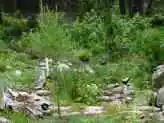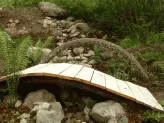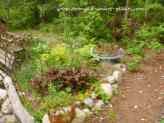Rules to Garden By
As an Amazon Associate I earn from qualifying purchases.
Other links on this site may lead to other companies that I’m associated with.
Ask your landscaper if they are xeriscapers. Don’t know what this is? Find out about some important questions to ask your gardener to see if they are in the xeriscaping mindset.
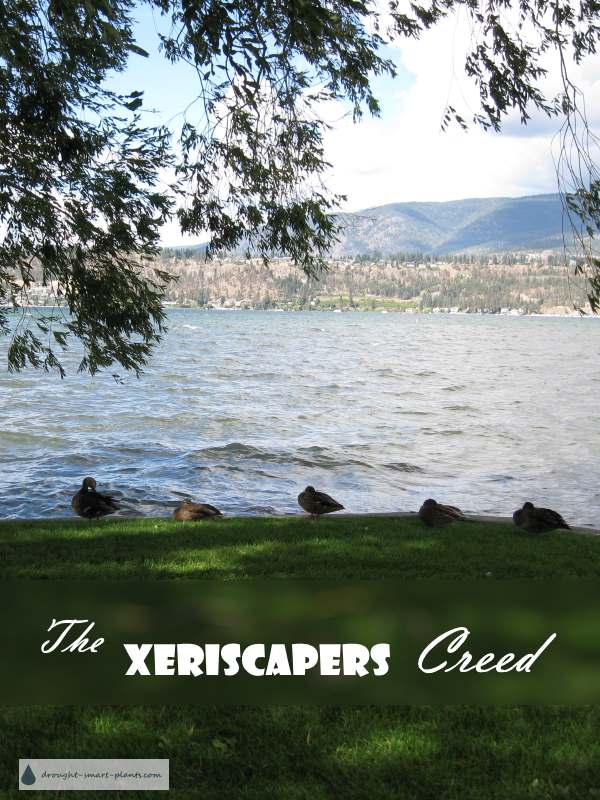
- What is the importance of water in the xeriscaped landscape?
- What kinds of plants would you consider to be drought tolerant?
- Why is soil so important in designing a xeriscape?
- What is ‘zoning’ and why is it important?
- What is so crucial about drainage?
- Does it matter about hardscaping?
- Why do I need to have a xeriscaped and drought tolerant garden?
- Is earth moving essential? What other things are important in xeriscaping?
So, what is the importance of water? Well, even xeriscaped landscapes need some moisture. Unless your garden is a moonscape with no plants at all, the lack of adequate water will create many problems.
Most xeriscape plants require more water while getting established, and less as they seek out the lower levels of soil where water can sometimes be stored for months, even during very dry spells.
Water is a most critical ingredient in any garden, and even xeriscapes need moisture, and a way to remove excess.
It’s important to keep in mind that we are only borrowing the water; protect the quality of it, and make sure it’s still pure and uncontaminated when it leaves the property.
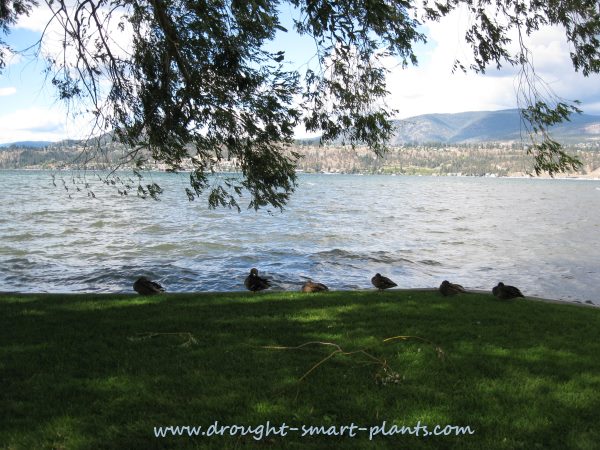
The types of plants that do best in a xeriscaped situation are native plants, which have the ability to adapt to extremely dry conditions, and are already adapted to the local climate.
They might have characteristics like the ability to go dormant during hot spells, to emerge with fresh growth in the fall or after a rainfall.
Succulents, both hardy types and more exotic imports are renowned for their traits of water storing tissues, and their knack of shrugging off almost intolerable neglect, seeming to thrive in spite of drought and lack of water.
Alpine plants also have this knack, and in fact, seem to prefer it.
Choosing the right plants for your climate and situation is a critical skill; without it, you won’t have a xeriscape, you’ll just have a desert.
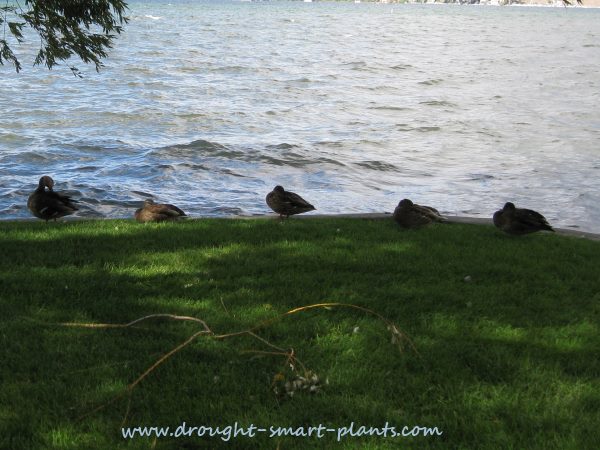
Soil type is an important part of determining drainage, or the lack of it, what types of plants will thrive in it, and most importantly, what needs to be done to improve it.
The ideal soil type is gravelly or sandy.
You can always add more organic matter to a soil to improve water holding qualities, but it’s really hard to create the perfect soil from clay.
If your soil is clay, think carefully about building raised beds to garden in rather than trying to improve the clay itself.
Zoning is the grouping of plants with similar needs together.
This creates a mini ecosystem, with all the plants requiring more moisture in one area, so they can support each other.
It also means that you will have a lot less work to do; you only need to create one small area where the soil is perfectly balanced for these higher maintenance plants, leaving the rest of the area to be more natural, and lower in care requirements.
A rain garden is the perfect way to have your cake and eat it too – concentrating higher water plants in an area close to the house and where water from the roof will be directed to it is an easy way to have a lush area nearby where you can see it from inside the dwelling.

Soil type is an important part of determining drainage, or the lack of it, what types of plants will thrive in it, and most importantly, what needs to be done to improve it.
The ideal soil type is gravelly or sandy.
You can always add more organic matter to a soil to improve water holding qualities, but it’s really hard to create the perfect soil from clay.
If your soil is clay, think carefully about building raised beds to garden in rather than trying to improve the clay itself.
Zoning is the grouping of plants with similar needs together.
This creates a mini ecosystem, with all the plants requiring more moisture in one area, so they can support each other.
It also means that you will have a lot less work to do; you only need to create one small area where the soil is perfectly balanced for these higher maintenance plants, leaving the rest of the area to be more natural, and lower in care requirements.
A rain garden is the perfect way to have your cake and eat it too – concentrating higher water plants in an area close to the house and where water from the roof will be directed to it is an easy way to have a lush area nearby where you can see it from inside the dwelling.
Hardscaping, or the hard surfaces of the landscape are crucial for making your garden liveable and usable. Pathways, patios and walls are important ways to direct traffic, retain soil, allow water to drain away and prevent soil erosion.
A perfect blending of planted areas and places to sit, walk or play will make your garden a pleasurable place to be in all weathers.
The main reason for tackling a xeriscaped garden is to reduce your dependency on water that is getting to be in short supply. If your landscaper wants to put in irrigation that is wasteful, run quickly in the other direction.
Thoughtful and wise water use is the prime focus of xeriscaping, not to make it easier to use even more of this precious resource.

Earth moving, or terracing, berming and swaling is pretty crucial to get right in the beginning.
Starting with a brand new garden makes it easy to see where the water needs to be directed to, and creating that drainage, interesting level changes, and hardscaping areas.
An established garden is more difficult to get that flow. It’s generally not feasible to completely rip out shrubs, lawn and full grown trees to redirect water, or build other features.
Quite often, it’s a case of fixing an error made in the early stages of design and planning, such as planting a tree too close to the house, which looked cute in the first ten years, but now it’s towering over the eaves and causing root damage to the foundation.
Think carefully ahead of time, and always look up – is that cute little tree going to grow into a monster one day?
Other things that are important in xeriscaping are to have the right mindset.
A xeriscaped garden does not spring fully formed; it’s important to give it time to mature, and grow into it’s space slowly.
There is the tendency to want instant gratification, which lasts for only a short time until the shrubs that are planted full size, trees that really are too close together, and other plantings that quickly outgrow their space need to be completely renovated.
Xeriscaping takes into consideration that other dimension, Time.

